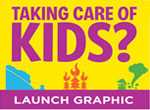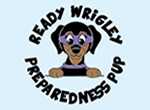Schools and Childcare Centers

Emergencies and disasters can happen during the school day. Taking steps now can help protect the students in your care.
Planning and Preparing for Emergencies
Learn more about steps that can keep your schools safer.
- Tools and trainings from Readiness and Emergency Management for Schools Technical Assistance Center
- CDC’s Zombie Pandemic toolkit for middle school teachers
- School Safety guide from the Department of Homeland Security
- Ready Kids Youth Emergency Preparedness Curriculum from FEMA
- Printable Emergency Worksheet
- Infographic: Easy as ABC
- Ready Wrigley Backpack Card
- Save the Children Disaster Checklist
- Back to School Preparedness Podcast
- School Crisis Guide: includes resources for preparing for, reacting to, and responding to a crisis
- FEMA’s Youth Preparedness page
- FEMA’s Student Tools for Emergency Planning (STEP)
- FEMA’s Teen Community Emergency Response Team (Teen CERT)
Protecting the Youngest Learners: Caring for Children 0-5
You care for our youngest and most vulnerable. Take steps now to protect them during emergencies
- Tools, trainings, and other resources for Early Childcare Programs
- Interactive trainings from Save the Children
- The American Academy of Pediatrics provides links to disaster preparedness standards and more for childcare providers
- Multihazard Planning for Childcare free, interactive, web-based training from FEMA
- Recommendations for Protecting Children in Childcare During Emergencies from the National Association of Child Care Resource & Referral Agencies and Save the Children
After an Emergency: Helping Children Cope
Schools are a place of learning and support. You have an important role to play in helping children recover after an emergency.
- Resources from the National Child Trauma Stress Network to help students cope with and recover from trauma
- The Child Trauma Toolkit for Educators (English and Spanish)
- Info written by teachers for teachers
- A Field Manual for administering Psychological First Aid
- Guidelines for helping students after earthquakes, hurricanes, and tornadoes
- Post Disaster Reunification of Children: A Nationwide Approach
- Tips for Talking With and Helping Children and Youth Cope After a Disaster or Traumatic Event: A guide for parents, caregivers and teachers
Child Welfare and Juvenile Justice
It’s important for state and local juvenile justice agencies, child welfare and foster care systems to adequately prepare for disasters.
- The Emergency Planning for Juvenile Justice Residential Facilities: A comprehensive planning guide to address the specific needs of children, youth, and families involved in the juvenile justice system during an emergency
- Save the Children’s Child Safety Guidance for Emergency Evacuation Shelters and Local Assistance Centers: Provides low-cost and no-cost improvements to improve the safety and well-being of children and adults who are in emergency evacuation shelters, local assistance centers and other locations where children and families congregate before, during and after incidents
- The Children in Emergencies Planning Guide: Guidance to help local and state emergency managers/coordinators in their efforts to include children in emergency planning
- Page last reviewed: July 17, 2017
- Page last updated: July 26, 2017
- Content source:


 ShareCompartir
ShareCompartir



